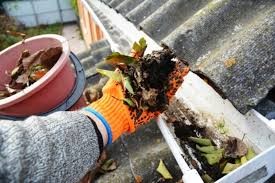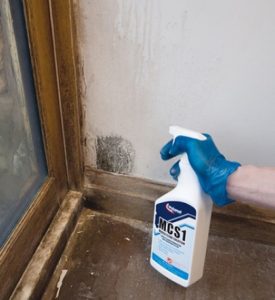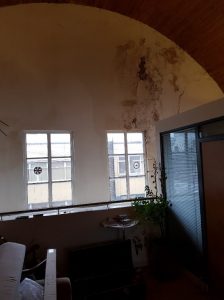Keeping your home safe and protected from all kinds of damp and mildew is important. Your house is sadly going to be at risk of developing all manner of issues unless you look after it properly. If you have a basement, the best place to start is at the very bottom level. Basement damp proofing has become a crucial process for many homes and families who find themselves at risk of developing damp or moist conditions which could pose serious risks to their health. Here at LABS, we are always happy and ready to take on any damp proofing tasks and concerns you may have.
Your basement is going be the room, which is closest to the ground, and therefore, it is going to be at most risk of developing damp conditions by letting water in. Consider where your home is built. Are you at risk of flooding from nearby water sources? Then you are also likely to be at risk from damp and other potentially harmful conditions. For this reason, we always recommend that you damp-proof your property in case the worst possible case scenario occurs.
It may seem simple just to leave your basement to its own devices. While in many cases, there may not be any harm in doing so, we always advise that you take caution. Damp proofing is going to mean that your home is always going to stand resistant against the threat of harmful moisture. Damp conditions can lead to mould, especially black mould, which can have a huge effect on the breathing quality of the air in your home.

As mentioned, the closest room or space to the ground floor is going to suffer the most when it comes to external moisture and damp. For this reason, you need to be very careful with what you store in your basement. Electrical equipment, for example, could be at risk of getting irreparably damaged from season to season, also timber joists are particularly prone to moisture ingress, unless they’re adequately protected with some sort of barrier protection, such as the membrane protection pictured below.

Damp often starts out in a basement thanks to its lack of waterproofing. While other rooms in your home may be waterproofed and protected, this doesn’t mean your basement benefits from the same protection. Damp and water can easily penetrate the walls of your basement, which puts it at huge risk of developing mould and other problems.
Damp may not seem like much of a problem on the face of things. If you don’t use your basement much, you may wonder what the fuss is all about. Ultimately, leaving damp to take hold can mean that you are putting your whole home and your family at risk. Mould and fungus have a habit of rising and crawling through your home, and both can carry enormous health risks. What’s more, if you have ever seen mould or fungus growing on a wall, no matter what room, it is never pleasant to behold.
Basement damp proofing is the perfect solution, if not the best preventative measure, to ensure that your home stays free from nasty damp, fungus and mould which can rise up through the building. By waterproofing your basement, and by preventing moisture from getting through, you are keeping your home clean to breathe in, and pleasant to look at. Damp proofing may not seem like something you need to enter into as a priority, however, it is greatly recommended. This is especially the case if you intend to grow a family, or if you really want to develop your property.
LABS offer passionate, knowledgeable experts who have worked with thousands of different basements and other damp proofing jobs over the years. This means you can always rely on us to offer you the most efficient, cost-effective preventative measures for keeping moisture out of where it’s not wanted. Some moisture in the air is necessary – but too much, and your home is going to become a hotbed for nasty bacteria and disease. Why take the risk? It is surely worth the investment to ask an expert to come and take a closer look.
LABS operate in and around Sheffield, and even beyond. Call our team at any time to arrange a free quote and consultation, and to learn more about the damp proofing process. We’re here to help keep your home fighting fit for years to come! Call us on 0114 230 2865 or drop us an email today for more details and let’s get started ASAP.

Mould is a major inconvenience, and can actually be dangerous to a tenant’s health, if left untended. In this blog post we will be discussing the different methods, and precautions you can take in order to prevent mould growth in your home. Whilst it is important to learn how to get rid of existing mould, it is just as important to understand how to prevent it from occurring in the first place.
Below we will list 5 tips that will help you to prevent mould growth from occurring in your property.
Moisture can be a nuisance, as it makes its way into properties very easily given the right conditions. Finding a way to eliminate moisture is a key step in the prevention of mould growth. It is important to check areas that could frequently collect water or have a build-up of condensation. Windows, fridges and crawl spaces are all popular places for water to build up, and it is in these environments that mould will start to form. It is therefore vital, that you take all measures possible to quickly dry any moisture in areas like these, and perform the proper maintenance, so that no further moisture is allowed to settle.

Proper ventilation of your property is also a key factor in preventing mould growth. Ventilation works to prevent humidity from gathering in the air and getting trapped in an indoor space. If left unventilated, the space will simply build up with moisture, will in turn lead to widespread mould growth. Having good airflow in essential in cutting back on the moisture level, and it will help to dry the affected areas more quickly. You can optimise the ventilation by ensuring all vents are unobstructed, as this will ensure that the air is circulating efficiently, therefore further helping to keep the spaces dry.
Mould thrives in areas of high humidity. Because humidity often causes condensation, moisture is able to settle in your property, and the dampness will take much longer to dry out, because of the wet air. If the air inside your home, is suddenly exposed to rainy and/or excessively humid conditions, there is the potential for increased mould growth. Keep an eye on moisture building up around windows, or on walls and wipe down with an absorbent cloth to prevent mould from occurring.

Condensation is a major player in the formation of mould growth, it is therefore important to also treat and prevent this from occurring.
The key component to condensation in the air, is excess moisture, and so it makes sense to remove as much of it as possible in order to manage the build-up of condensation. A great way to do this is to use a positive input ventilation system, which is an energy efficient method of displacing stale contaminated air and replacing it with fresh filtered air. Fresh air is drawn from outside via the loft space through a filter on the unit and delivered into a central location in your home.
This displaces vapor-laden air, which lowers humidity levels, cures condensation and eradicates mould. The unit runs continuously except when the loft temperature rises above 25°C, when the unit will switch off. When the air temperature falls below 25°C, the unit will switch back on. For more information on these systems, see our shop page at: https://l-a-b-s.co.uk/product/positive-air-vents-heat-recovery-units/

Mould problems can occur as a simple matter of a fault roof, whereby water is allowed to ingress, as a result of full or damaged gutters. It is good practice to have your gutters regularly cleaned, and inspected for damage, so that any issues can be fixed, before they become a larger issue (This is a service we can provide at LABS.) Once necessary repairs and maintenance have been carried out, it is important to keep a close look out for any water stains, that may indicate a leak.
When you first spot damp or mould in your home, it can be tempting to leave it alone. Surely it’s just a cosmetic issue – right? Sadly not. Leaving damp walls to fester for weeks and months at a time isn’t just going to encourage the problem to grow; it’s going to potentially put your health at risk!
Yes – even the smallest of damp patches, or cluster of mould spots, will need attention as soon as possible. But why is this? And just how bad are damp walls for your health – how do you know when you’ve dealt with it completely? As experts in damp proofing for homes, LABS is always here to help. For now, however, let’s take a look at wall damp in a little more detail, so we can understand fully what we’re dealing with.
 Damp walls are more than just unsightly. While you’re probably going to want to get damp and mould fixed before the problem gets any worse, there’s a chance you’re going to put you and anyone else in your home at risk. But why is this?
Damp walls are more than just unsightly. While you’re probably going to want to get damp and mould fixed before the problem gets any worse, there’s a chance you’re going to put you and anyone else in your home at risk. But why is this?
The answer is mould spores. Black mould spores, in particular, can thrive and grow in damp patches on all manner of surfaces in your home. Walls, in particular, are areas you should be paying close attention to. Black mould, ultimately, can prove fatal when inhaled. They are toxic to humans – which means no matter how healthy you think you are; you probably shouldn’t be taking any chances.
It’s best to get black mould attended to as soon as possible. However, there are plenty of symptoms to look out for if you’re worried that you’ve already been breathing in the spores. People who have breathed in toxic spores will have problems with breathing and even sickness. Black mould can be particularly deadly for asthma sufferers, as it can trigger attacks with very little warning.
Believe it or not, black mould can even lead to extensive illness and chronic conditions from person to person. Leaving damp walls to persist could put you and your family at risk of infection and even flu viruses. It may even lead to pneumonia if you’re not careful. If you are reasonably healthy and have a solid immune system, you probably won’t have much to worry about. However, if there are people at risk in your home, such as the very young or elderly, you are going to need to take action against damp as soon as possible.
Black mould can also cause severe lung damage over time. It can also cause a number of allergic reactions which, of course, can also prove to be deadly. Essentially, it is crucial that you identify and make arrangements for black mould to be removed safely as soon as physically possible. But how?
 You may have seen plenty of household products on the market which promise to get rid of black mould once and for all. While some of these products – such as special paint or fungal kits – can work in some circumstances, many products available off-the-shelf are not going to be able to clear black mould and other dangerous growths as efficiently as you need them to.
You may have seen plenty of household products on the market which promise to get rid of black mould once and for all. While some of these products – such as special paint or fungal kits – can work in some circumstances, many products available off-the-shelf are not going to be able to clear black mould and other dangerous growths as efficiently as you need them to.
Therefore, you are going to need to think about using high-grade equipment and products to make sure your damp walls can be easy remedied. Black mould can be killed with the right treatment; however, you don’t have to invest a lot of money in doing so. When opting for a worthwhile solution, there may not be any need for you to vacate, or to close off your rooms. Each case is going to be slightly different – which is why the team at LABS makes sure to be as flexible as possible when consulting with our customers.
It’s perfectly possible that you can treat and remove smaller mould spots and damp patches with household products. However, with large-scale problems, or those which have already grown black mould in spades, it’s time you thought about getting in touch with an expert.
The team at LABS works with the best equipment and industrial-grade products to safely treat and destroy mould for good. Damp walls may seem impossible to cure on your own. However, we make sure to closely identify the problems you are facing and to give damp and mould conditions the push. We always ensure to use treatments which will work as quickly and as effectively as possible, and what’s more, we will never charge over the odds for our services.
Need help with damp walls or black mould? Call the LABS team today on 0114 230 2865 or get in touch with us online to book a free consultation when you’re ready.
We at LABS basements and damp proofing would like to share some of our top tips on how to spot damp walls, and the different types of damp that could be present.
Rising damp is perhaps the most commonly known form of damp that might affect your home. It tends to occur in older buildings, with no adequate damp proof course (DPC), when groundwater rises up through porous materials, such as the bricks and mortar that make up your walls.
A common signature of rising damp is a clearly defined band of dampness, starting at your floor and moving upwards, this will often cause your paint to start flaking, or wallpaper to peel. Damp walls that are caused by rising damp can also result in other symptoms such as:


These pictures show typical signs of rising damp and damp walls. The picture on the left picture shows moisture readings indicative of rising damp, along with visual signs such as the blistered plaster work. The picture on the right shows what a wall affected by rising damp might look like.
Penetrating damp occurs when water manages to find its way inside a property from the exterior. This can happen in a number of ways, such as ingressing through walls, windows, and door fittings. penetrating damp is more likely to arise as a problem in older properties, or those located by the sea or in open areas that are open to the elements. It is key to identify penetrating damp as quickly as possible otherwise it may evolve in to a larger issue, such as a rot infestation, or contaminated plaster.
Whilst some of the symptoms of penetrating damp, are similar to those of rising damp, the key differential between the two is usually found in the structural factors. Penetrating damp tends to occur as a result of structural issues, such as a failing guttering system, faulty roofing, or cracks and holes in external walls. Penetrating damp is one of the most common causes of damp walls.
These are some telling signs of penetrating damp


Importantly dampness around the chimney can be often misdiagnosed as a problem with the chimney stack. More often than not this problem can be attributed to the fossil fuel residue left by coal, coal contains salt minerals such as nitrates, chlorides and sulphates that can migrate from the brick work through to the plaster finish. When in the plaster finish, these salts draw moisture from the environment to them and will show up with wet patches with no uniformity in presentation.
The problems with damp chimney walls are alleviated in a similar fashion to other damp problems. chimneys are also prone to other causes of dampness, such as; open or broken chimney pots, poorly-constructed chimney stack/lead fleshing, ventilation and cracked mortar around the chimney stack. It is important to note that rising damp can also lead to chimney damp if left untreated.
Here are some ways to tell if you have a chimney damp problem, and these can be at any section of the chimney breast throughout a given property.

This picture shows a clear damp patch just below the dado decorative rail.